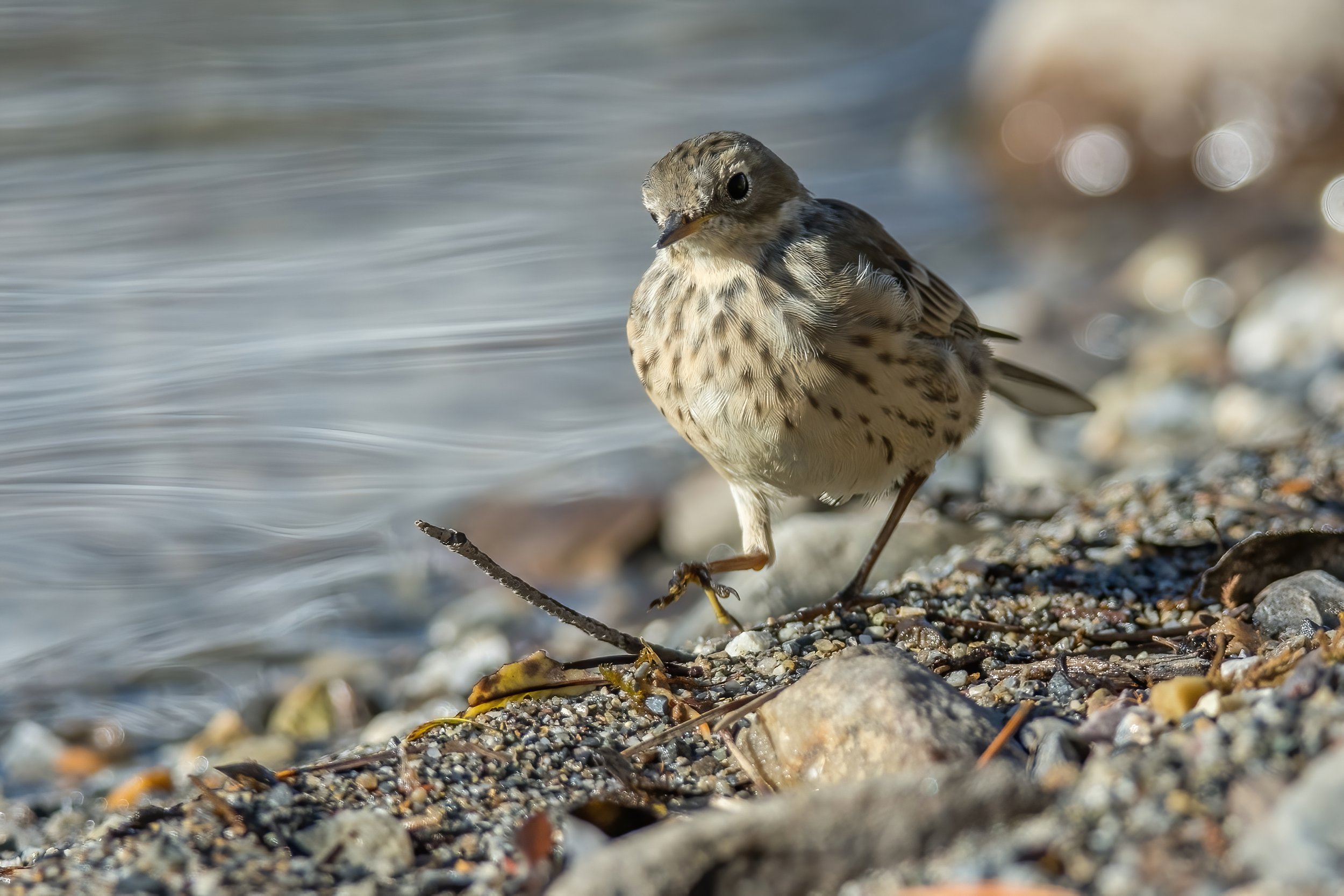Dan's Feathursday Feature: American Pipit
I’m determined to write about the American Pipit, but I don’t know where to begin. I don’t mean there is so much to say that I can’t decide where to start. I mean it literally: I know practically nothing about the American Pipit. Tabula rasa. Blank slate.
That’s often a good place to start. And I’m guessing that at least some folks reading this may be as in the dark as I am about the bird known in North America as the American Pipit, and most other places in the world as the Buff-bellied Pipit. So, refusing to be cowed by ignorance, let’s start in the best place—from experience.
I can thank a moose for my first encounter with the American Pipit. It was during a family trip to British Columbia’s Yoho National Park. I’d been birding a very short time, and I was in what I like to call the one-surprise-after-another phase of birding. You remember those early years, don’t you, when you first realized, “Oh my gosh, there’s more than one type of sparrow!” I traipsed around with a long lens on a digital camera, photographing every bird that would pose for me, and then reviewing the photos to figure out what I had seen.
The camera was in the back seat, and we were stopped on the shoulder of the Trans-Canada Highway near the tiny town of Field, because my wife had shouted, “Moose!” We grabbed the binoculars and camera and scrambled out of the car to get a better look. It was a young bull standing on the opposite shore of Wapta Lake.
After sitting there for fifteen minutes or so, Harumi whispered, “Did you get some good shots?” “Huh? Ya,” I answered. “Don’t move! It’s coming closer.” Puzzled, she looked over and saw that I was not looking at the moose at all. My attention was fixed on the near bank of the river, just fifty feet away. On the rocks where a feeder stream poured into Wapta Lake an unusual bird was prancing about. I’ve seen moose before, but I had never seen a bird like this. I was so engrossed in the bird that I had forgotten about the moose, which had by now disappeared in the woods across the lake.
Of course, I had taken a few shots of the moose before I spied the bird, so no family argument ensued, but I got many more photos of the bird. It was about the size of a sparrow, and was colored in shades of gray that reminded me of a Vesper Sparrow. (I had seen my first Vesper Sparrow earlier that same year.) But it did not act like a sparrow, and it was close enough that I could see its bill was more thrush-like than sparrow-like. Its posture and overall body shape were similar to a thrush, but its movements were very different. It didn’t hop like a robin, but walked about almost daintily, its head bobbing forward and backward, chicken-like—the way an Ovenbird walks. And as it moved from stone to stone beside the stream, it sometimes wagged and bounced its butt, like a waterthrush.
The bird had a leg in all three groups—sparrows, thrushes, warblers—but clearly did not belong in any of them. And though I could not identify the mystery bird, there was something vaguely familiar about it. It seemed I had seen this bird before.
Back at the hotel, perusing a field guide I found the bird that matched my photos: American Pipit, page 457. But before landing on page 457, my eyes had stopped at a bird two pages earlier, and I realized why the bird beside Wapta Lake had seemed so familiar. Neither thrush, nor warbler, nor sparrow, the American Pipit is closely related to the White Wagtail, a bird I had often enjoyed watching when I lived in Tokyo. Known in Asia as the Buff-bellied Pipit, the American Pipit, is a short-tailed, drab-colored version of its ostentatious cousin, the White Wagtail.
By now you may have noted that I still have not told you much about the American Pipit, except to point out what it is not. Or what it almost is. Nondescript is probably the best way to describe this sparrow-like, thrush-like, warbler-like cousin of the White Wagtail. During migration, on their way to and from their breeding grounds in the Arctic tundra and the tundra-like alpine meadows of the Rocky Mountains, American Pipits pass through the Chicago area in good numbers, and they are not particularly shy. But chances are that if you see one, you may well mistake it for something else, if you notice it at all.
Maybe that’s just the way the American Pipit prefers it.
Dan's Feathursday Feature is a regular contribution to the COS blog featuring the thoughts, insights and photography of Chicago birder, Dan Lory on birds of the Chicago region.






